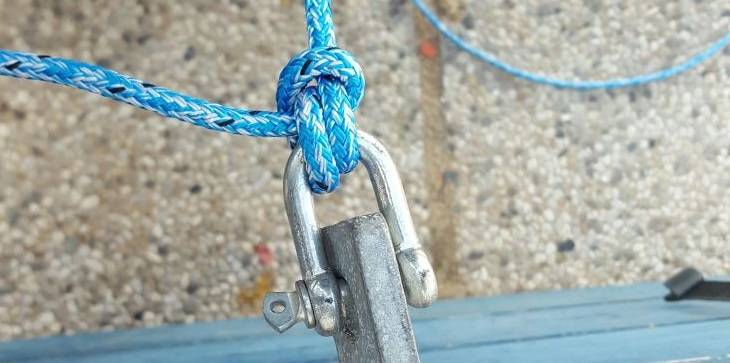Leggi l’articolo in italiano
Beached and stranded on the cliffs. There is a great difference between running ashore and getting stranded on the rocks. First of all, for the possible damages. Often null in the first case, very serious in the second one. And then, for the different possibilities of way out : easy in the first case, more difficult if you are stuck in the rocks.
The first thing to do is also the easiest one: you must not go forward.
So, if you have put the keel into a sandbank, you can put into reverse only if the keel doesn’t have a torpedo or a bulb with wings. In these cases, in fact, a reverse would make you running ashore more in the opposite side.
If a reverse doesn’t solve your problem or if it is not possible, the best thing to do is to make the boat swerve.
You can open all the bowsprit in order to make it come out of the deck and let the crew go on the toe rail in the same side. Finally, you must put into reverse.
Another more efficient method considers the use of the tender. In this case, you must put the end of the halyard passing through the masthead on the tender, fix it on a strong stay and start to exercise a lateral traction in order to tilt the boat and take it to open waters.
But the tender engine is often not too powerful and it is not able to pull the boat or make it swerve. So, you can use the anchor. You must put it on the tender with the halyard fixed on the shankeye. Then, sink it laterally to the boat as far as possible but not in deep waters, or the anchor would not be able to hold the boat.
Then, you must pull with a winch and help the boat swerve by moving all the load on the same side of the anchor.
If you are stuck in the rocks, the situation is more difficult. If the weather is good, you should dive to verify if the boat is damaged and see the sea bottom in order to understand in which direction you can try to go.
If the situation is not too serious, you can try to use one of the methods we have already seen.
On the contrary, if you are completely stuck in the rocks, trying to make the boat swerve will be an useless and dangerous effort.
Anyway, if a try is possible, you must consider the presence of an eventual stream to take advantage of it.
Tides can be useful. If you got stuck with low tide, the arrive of a high one could be a solution.
If any try hasn’t been successful, you must ask for help. If your rescuer is a yachtsman like you, you can thank him with a bottle or a dinner.
However, the sailing code establishes the pulling fee, even if with very approximative rules. There are no fixed fees and the matter is treated as a normal negotiation between private citizens.
Once an agreement about fees is found, passing your ropes to your rescuer means to accept the agreement and the amount of the fee to pay.
If your rescuer is a professional, the situation is theoretically clearer.
Formal fees consider boat size, the type of rescue and the necessary miles to save the boat. There are also some companies which offer some subscriptions, a sort of sea AA Brit. In any case, the cost is not cheap. You can search on the internet.
Finally, if your rescuer is the coastguard, please remember that they have to save people and not the boat.





























